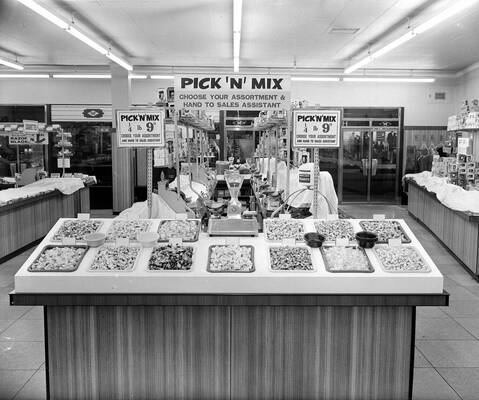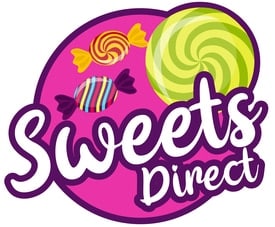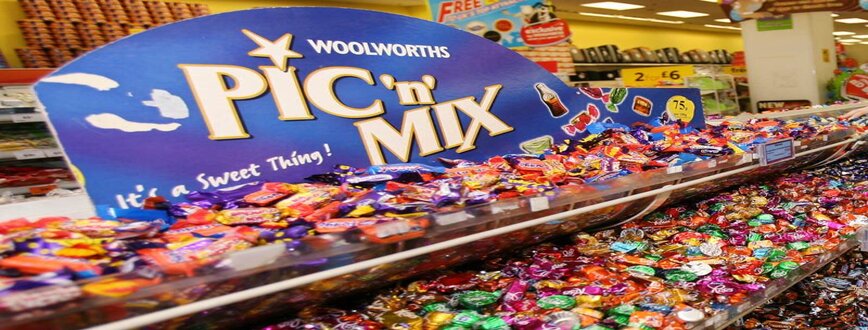Pick ‘n’ Mix: How Woolworths Created a Sweet Culture in the U.K
Just about every Brit is familiar with the concept of pick and mix: a striped paper bag filled to the brim with favourite sweets. But, over time the pick and mix has grown to be not just a treat but an essential component of British culture. Once exclusively available in Woolworths stores, today it is possible to find pick ‘n’ mix sweets available across many venues, including cinemas and general supermarkets. So, how did the humble pick ‘n’ mix grow to be so popular? Let’s take a closer look at this type of beloved confectionery and where it all began…
The History of Pick and Mix Sweets
The United Kingdom has a long history, with sweet trade dating right back to the Tudor period. Tudor candies, or sweets, consisted of nuts and fruit in hard sugar coatings, a delicious treat to be enjoyed by those of nobel status. Throughout history, sugared foods were associated with indulgence and luxury. Only rich families could afford such commodities. It was later in the 1800s, once mass production was introduced, that larger quantities of sweets could be made and traded.
One of the earliest sweets, the ‘pastille’ or ‘fruit pastel’, a recipe brought from the French to the U.K. and introduced to Rowntree, a major sweets manufacturer, can still be found in pick ‘n’ mix bags today. Then, later during the Victorian times, other popular sweets emerged including Jelly babies, in the late 1800s, another pick and mix fan favourite. By the turn of the 20th century, sweets had become a ‘common’ love. People from all walks of life could access chocolate, jelly sweets, chew sweets, and more in the U.K. In the Summer of 1909, Frank Whinfield Woolworth, decided to introduce the U.K to a new concept: Pick and Mix.
Originally, Pick ‘n’ Mix sweets were founded in North American stores in 1886 by Woolworth, becoming an instantaneous success. Woolworth knew that there was clear money to be made and more success by bringing the idea to Britain.
By 1909, Woolworth’s research was well underway, and terms were agreed with Barker & Dobson, a customer of Woolworth’s, to supply stores with sweets including the popular Everton mint. The majority of candies were being imported to the U.K. from the capital, New York. Mahogany counters quickly became adorned with all sorts of shiny, wrapped sweets, ready for British and consumers to take their pick. The first store to be opened by Woolworth’s with a Pick and Mix counter was on Church Street, in Liverpool in 1909.
Now, those with a sweet tooth, would be able to head to their nearest Woolworths store and fill a paper bag with not just one type of sweet, but as many as they desired. Once filled, they would be charged based on the total weight of the sweets inside the bag.
Amazed by his success, Woolworth continued to establish more pick and mix counters across his stores, but wanted to source candy locally to cut down costs. William Stephenson, Woolworth’s business associate, was tasked with leading a buying operation to place huge wholesale orders. He visited both small and large factories such as Cadbury, to secure large chocolate slabs and sweets. The confectionaries that were previously being imported from New York were phased out and replaced by local names.
Pick and Mix Displays and Sweet Varieties
Much of the appeal of Pick and Mix was associated with display. Impressive displays needed to be refreshed throughout the day to continue to entice customers. Underneath the mahogany display counters was stock, boxes of sweets neatly stacked ready for topping up. Aswell as in-store displays, Woolworth’s also placed emphasis on window displays, which were used to promote new sweets available.
At the beginning of the 1930s, new approaches were embraced for the display of sweets in Woolworth’s stores. Glass-fronted counters were installed to avoid the need to unlock previous mahogany counters to restock. Now, workers could fill the display with more sweets than ever thanks to their spacious design.
For sweets with more exotic flavours, such as the Millady sweets, prices were higher. In the 1930s, Milady sweets were best-sellers and could be sold for an extra penny per quarter-pound. Likewise for any sweets that had a richer taste, such as indulgent and exclusive toffees, they were also priced higher.
Generally, Pick ‘n’ Mix sweets were priced at just two old pence per 125g, amounting to 56p per 100g in today’s currency. Shoppers were highly impressed by the selection of sweets now available at their local stores and began to quickly buy into the concept. Children would be treated to weekend pick and mix selections whilst adults also enjoyed appeasing their penchant for sweet things. By 1930, Woolworths had established itself as the major sweet shop name in Britain.
By the 1950s, Woolworths accepted the name ‘pick n mix’, given by customers, for its sweets. Lovingly, today, the term pick and mix continues to be associated with the joyous act of selecting a range of sweets and bringing them home to consume.
The Most Popular Pick and Mix Sweets
There are certain sweets that quickly grew in popularity when pick and mix was introduced: toffees and boiled sweets. Fudges containing ingredients such as vanilla, maple, and coffee were an adult’s favourite as were boiled sweet with spiced and fruity flavours. Pear Drops and Sherbert Lemons are just two examples of popular hard, or boiled sweets. With its almost sour sugary centre, the Sherbert Lemon tantalised with a contrastingly sweet, lemon exterior. Today, Sherbert Lemons continue to be loved by many.
Another popular Pick ‘n’ Mix sweet known as Dolly Mixture, also became an instant hit. The mixture, made up of chewy, fruit pastilles, and multi-coloured fondant shapes, was invented by sweet manufacturer Barratts. Today, Dolly Mix is still sold, both in individual packets, and at pick and mix counters.
Many new sweets have been added to pick and mix selections. Black Jacks and Fruit Cocktail sweets are an example, Black Jacks have an aniseed flavour and like Fruit Cocktail chews are individually wrapped. At almost every pick n mix counter today you can also find ‘fizzy’ sweets such as cola bottles, rainbow belts, and watermelon flavour sweets. These sweets are loved for their ‘tangy’ effect and are sometimes even flavoured purposefully sour. Lollipops, ‘cables’, and giant strawberries are also popular amongst pick and mix selections.
Closure of Woolworths Pick and Mix in The U.K.
Despite Woolworths failing into administration in 2008, resulting in all 807 stores across the U.K. closing, Pick and Mix prevailed.
Online pick and mix stores have also been established, where a huge variety of sweets and chocolates can be ordered and shipped directly to customer’s homes. And, for those that want to enjoy the novelty of picking up a metal scoop and doing pick and mix the traditional way, there are still thankfully many counters in supermarkets, branded retailers, and independent shops too.
Woolworths has undoubtedly changed British culture forever, by bringing the concept of picking and mixing favourite sweets to Brits. Now, it’s possible to enjoy all your favourite sweets in one sitting rather than commit to buying a single type – a reason to be eternally grateful to Mr Woolworth!

